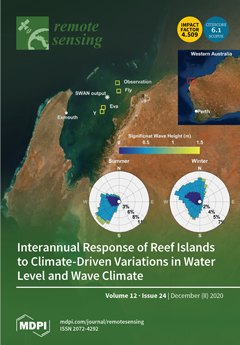Climate variability and recurrent droughts have caused remarkable strain on water resources in most regions across the globe, with the arid and semi-arid areas being the hardest hit. The impacts have been notable on surface water resources, which are already under threat from massive abstractions due to increased demand, as well as poor conservation and unsustainable land management practices. Drought and climate variability, as well as their associated impacts on water resources, have gained increased attention in recent decades as nations seek to enhance mitigation and adaptation mechanisms. Although the use of satellite technologies has, of late, gained prominence in generating timely and spatially explicit information on drought and climate variability impacts across different regions, they are somewhat hampered by difficulties in detecting drought evolution due to its complex nature, varying scales, the magnitude of its occurrence, and inherent data gaps. Currently, a number of studies have been conducted to monitor and assess the impacts of climate variability and droughts on water resources in sub-Saharan Africa using different remotely sensed and in-situ datasets. This study therefore provides a detailed overview of the progress made in tracking droughts using remote sensing, including its relevance in monitoring climate variability and hydrological drought impacts on surface water resources in sub-Saharan Africa. The paper further discusses traditional and remote sensing methods of monitoring climate variability, hydrological drought, and water resources, tracking their application and key challenges, with a particular emphasis on sub-Saharan Africa. Additionally, characteristics and limitations of various remote sensors, as well as drought and surface water indices, namely, the Standardized Precipitation Index (SPI), Palmer Drought Severity Index (PDSI), Normalized Difference Vegetation (NDVI), Vegetation Condition Index (VCI), and Water Requirement Satisfaction Index (WRSI), Normalized Difference Water Index (NDWI), Modified Normalized Difference Water Index (MNDWI), Land Surface Water Index (LSWI+5), Modified Normalized Difference Water Index (MNDWI+5), Automated Water Extraction Index (shadow) (AWEI
sh), and Automated Water Extraction Index (non-shadow) (AWEI
nsh), and their relevance in climate variability and drought monitoring are discussed. Additionally, key scientific research strides and knowledge gaps for further investigations are highlighted. While progress has been made in advancing the application of remote sensing in water resources, this review indicates the need for further studies on assessing drought and climate variability impacts on water resources, especially in the context of climate change and increased water demand. The results from this study suggests that Landsat-8 and Sentinel-2 satellite data are likely to be best suited to monitor climate variability, hydrological drought, and surface water bodies, due to their availability at relatively low cost, impressive spectral, spatial, and temporal characteristics. The most effective drought and water indices are SPI, PDSI, NDVI, VCI, NDWI, MNDWI, MNDWI+5, AWEI
sh, and AWEI
nsh. Overall, the findings of this study emphasize the increasing role and potential of remote sensing in generating spatially explicit information on drought and climate variability impacts on surface water resources. However, there is a need for future studies to consider spatial data integration techniques, radar data, precipitation, cloud computing, and machine learning or artificial intelligence (AI) techniques to improve on understanding climate and drought impacts on water resources across various scales.
Full article





